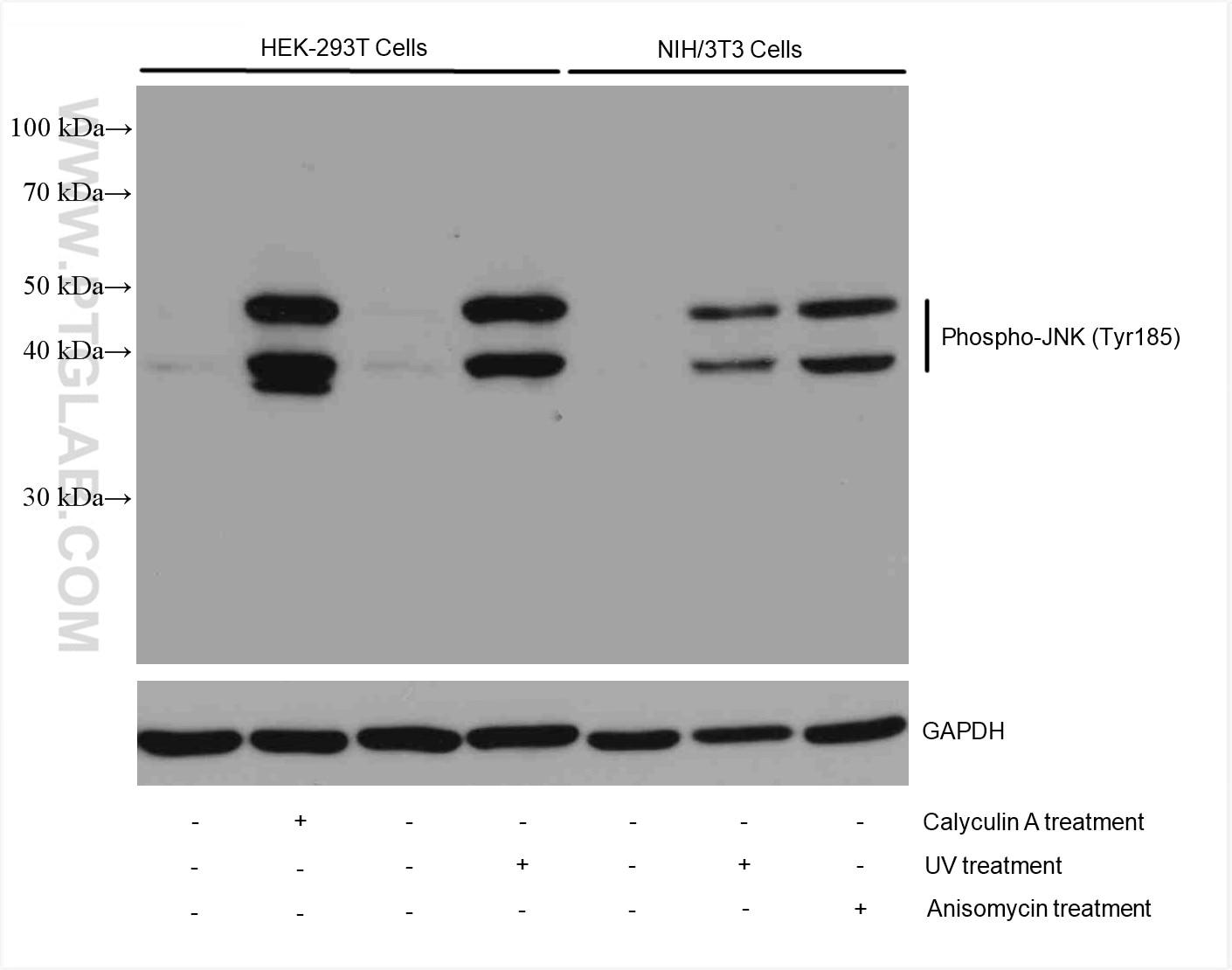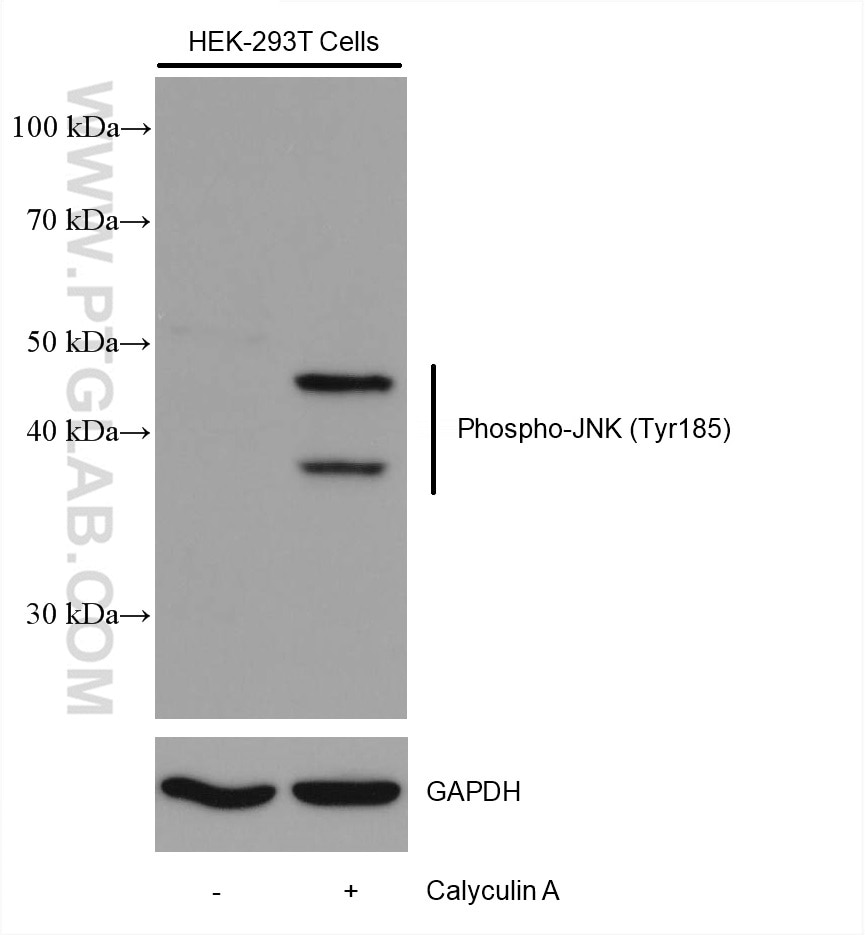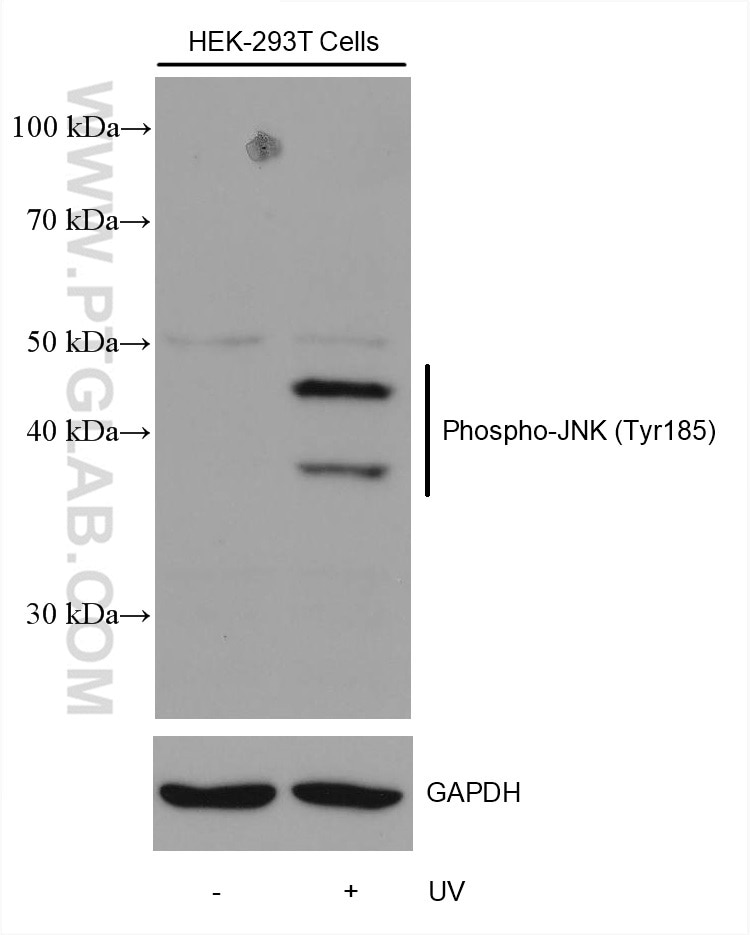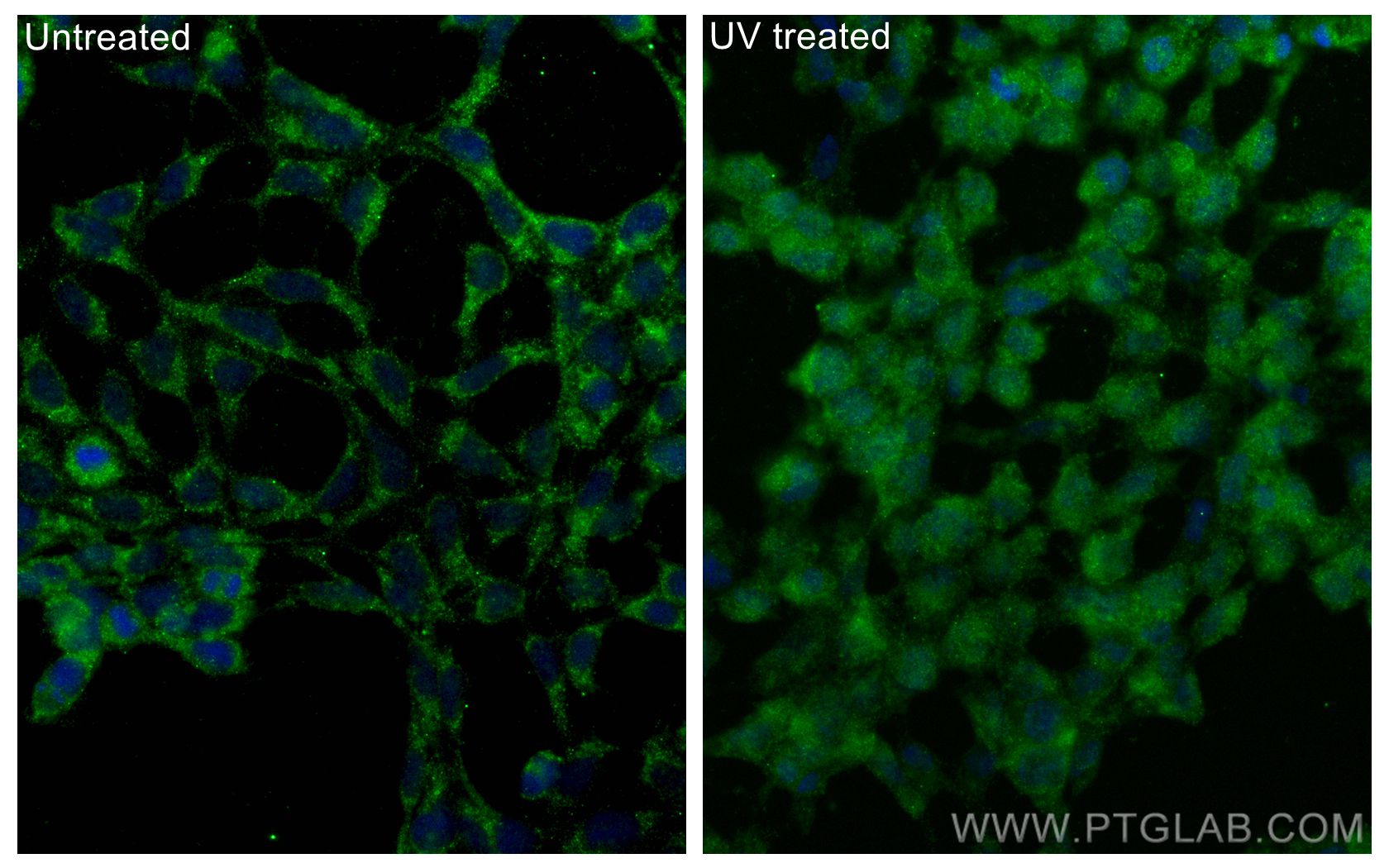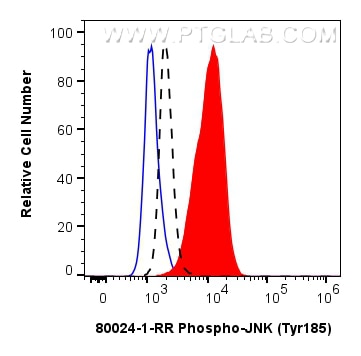Anticorps Recombinant de lapin anti-Phospho-JNK (Tyr185)
Phospho-JNK (Tyr185) Recombinant Antibody for WB, IF/ICC, FC (Intra), ELISA
Hôte / Isotype
Lapin / IgG
Réactivité testée
Humain, souris et plus (3)
Applications
WB, IHC, IF/ICC, FC (Intra), ELISA
Conjugaison
Non conjugué
CloneNo.
2G8
N° de cat : 80024-1-RR
Synonymes
Galerie de données de validation
Applications testées
| Résultats positifs en WB | cellules HEK-293T, cellules HEK-293T traitées à la calyculine A, cellules HEK-293T traitées au UV, cellules NIH/3T3 traitées à l'anisomycine, cellules NIH/3T3 traitées au UV |
| Résultats positifs en IF/ICC | UV treated HEK-293 cells, |
| Résultats positifs en FC (Intra) | cellules HEK-293 traitées à la calyculine A, |
Dilution recommandée
| Application | Dilution |
|---|---|
| Western Blot (WB) | WB : 1:1000-1:4000 |
| Immunofluorescence (IF)/ICC | IF/ICC : 1:200-1:800 |
| Flow Cytometry (FC) (INTRA) | FC (INTRA) : 0.13 ug per 10^6 cells in a 100 µl suspension |
| It is recommended that this reagent should be titrated in each testing system to obtain optimal results. | |
| Sample-dependent, check data in validation data gallery | |
Applications publiées
| WB | See 273 publications below |
| IHC | See 5 publications below |
| IF | See 8 publications below |
Informations sur le produit
80024-1-RR cible Phospho-JNK (Tyr185) dans les applications de WB, IHC, IF/ICC, FC (Intra), ELISA et montre une réactivité avec des échantillons Humain, souris
| Réactivité | Humain, souris |
| Réactivité citée | rat, Humain, poisson-zèbre, porc, souris |
| Hôte / Isotype | Lapin / IgG |
| Clonalité | Recombinant |
| Type | Anticorps |
| Immunogène | Peptide |
| Nom complet | mitogen-activated protein kinase 8 |
| Poids moléculaire observé | 37-46 kDa |
| Numéro d’acquisition GenBank | NM_139049 |
| Symbole du gène | JNK |
| Identification du gène (NCBI) | 5599 |
| Conjugaison | Non conjugué |
| Forme | Liquide |
| Méthode de purification | Purification par protéine A |
| Tampon de stockage | PBS with 0.02% sodium azide and 50% glycerol |
| Conditions de stockage | Stocker à -20°C. Stable pendant un an après l'expédition. L'aliquotage n'est pas nécessaire pour le stockage à -20oC Les 20ul contiennent 0,1% de BSA. |
Informations générales
MAPK8(Mitogen-activated protein kinase 8) is also named as JNK1, PRKM8, SAPK1, SAPK1C and belongs to the MAP kinase subfamily. The JNK gene generates 10 forms of JNK through alternative splicing, and the protein encoded by the JNK gene has or does not have a COOH terminal, resulting in 46 kDa and 54 kDa proteins. MAPK8 is activated by dual phosphorylation at a Thr-Pro-Tyr motif during response to UV light. Phosphorylation of these sites in response to UV results in transcriptional activation of c-Jun. In the phosphorylation of JNK, JNK1 and JNK2/3 have molecular weights of 46 and 54 kDa(PMID: 21378396)
Protocole
| Product Specific Protocols | |
|---|---|
| WB protocol for Phospho-JNK (Tyr185) antibody 80024-1-RR | Download protocol |
| IF protocol for Phospho-JNK (Tyr185) antibody 80024-1-RR | Download protocol |
| Standard Protocols | |
|---|---|
| Click here to view our Standard Protocols |
Publications
| Species | Application | Title |
|---|---|---|
Adv Sci (Weinh) OR11H1 Missense Variant Confers the Susceptibility to Vogt-Koyanagi-Harada Disease by Mediating Gadd45g Expression | ||
Redox Biol FUT2-dependent fucosylation of HYOU1 protects intestinal stem cells against inflammatory injury by regulating unfolded protein response | ||
Clin Transl Med PINK1 modulates Prdx2 to reduce lipotoxicity-induced apoptosis and attenuate cardiac dysfunction in heart failure mice with a preserved ejection fraction | ||
J Nanobiotechnology Peptide-anchored neutrophil membrane-coated biomimetic nanodrug for targeted treatment of rheumatoid arthritis | ||
Br J Pharmacol Allicin ameliorates imiquimod-induced psoriasis-like skin inflammation via disturbing the interaction of keratinocytes with IL-17A | ||
J Neuroinflammation SPOCK2 modulates neuropathic pain by interacting with MT1-MMP to regulate astrocytic MMP-2 activation in rats with chronic constriction injury |
